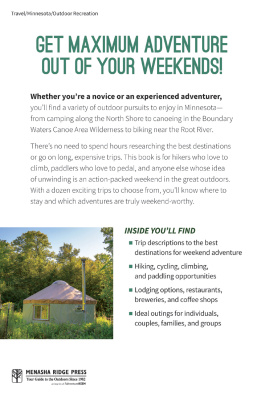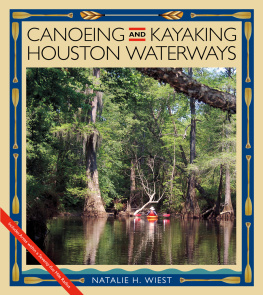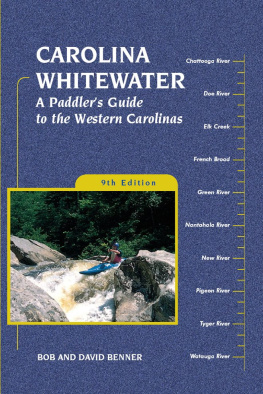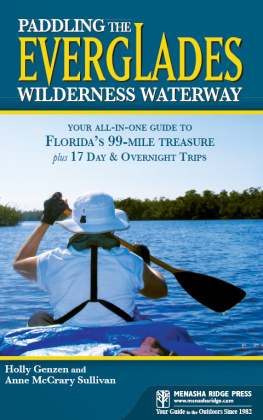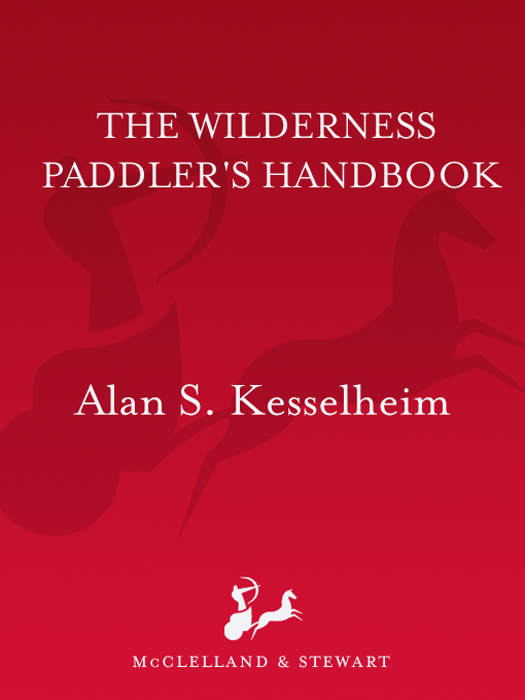Copyright 2001 Ragged Mountain Press
All rights reserved. The use of any part of this publication reproduced, transmitted in any form or by any means, electronic, mechanical, photocopying, recording, or otherwise, or stored in a retrieval system, without the prior written consent of the publisheror, in case of photocopying or other reprographic copying, a licence from the Canadian Copyright Licensing Agencyis an infringement of the copyright law.
Canadian Cataloguing in Publication Data
Kesselheim, Alan S., 1952
The wilderness paddlers handbook
eISBN: 978-1-55199-594-6
1. Canoes and canoeing Handbooks, manuals, etc. I. Title.
GV783.K47 2001 797.122 C00-933180-8
Published in the United States by Ragged Mountain Press, A Division of The McGraw-Hill Companies, P.O. Box 220, Camden, ME 04843
We acknowledge the financial support of the Government of Canada through the Book Publishing Industry Development Program for our publishing activities. We further acknowledge the support of the Canada Council for the Arts and the Ontario Arts Council for our publishing program.
Band-Aid, Battleship, Capilene, Cordura, Cream of Wheat, Deks Olje, Fastex, Frisbee, Kevlar, Malt-o-Meal, Outward Bound, Royalex, Scrabble, Steri-Strip, Subaru, Suburban, Thorazine, Tupperware, Velcro, Watco, Winnebago, Yahtzee, and Ziploc are registered trademarks.
McClelland & Stewart Ltd.
The Canadian Publishers
75 Sherbourne Street
Toronto, Ontairo
M5A 2P9
www.mcclelland.com
v3.1

Contents
18. Bears, Bugs, and Boonies: The Bad Bs
of Wilderness Paddling

Introduction
I need to come clean from the get-go. I own very few how-to books, and I hardly ever look at the ones that do sprinkle my bookshelves (mostly presents from well-meaning aunts and uncles). More than that, I tend to be skeptical of people whose shelves are jammed with technical, jargon-polluted, list-littered outdoor tomes. Im skeptical the same way I am of someone whose bedside table is stacked with self-help or dieting books.
My experience has been that its easy to confuse reading a book with doing something. You finish the last page feeling that flush of expanding awareness, that opening window of possibility, but it fades with time. A year later youre still overweight, still hounded by neuroses, and you still havent gone paddling. So maybe you buy another book, and you slide a bit further into the dark tunnel of informational addiction. How else to explain the popularity of those things? There just cant be that many new ways to become better people, thinner people, or people who go off in canoes.
You dont pull off a great canoe jaunt because you finally get hold of a spiffy equipment list, or because some gearhead elucidates the nuances of Kevlar and ABS. No. We go on trips because weve latched on to a great paddling companion, that rare and precious treasure. Or because one day were sucked in to a quadrant of blank map with a blue squiggle running through it and get so infatuated with the idea of that country that we cant stop thinking about it. Or because we read an intriguing explorers journal or get ambushed by a slide show full of wild, intense, sun-soaked river along about mid-January, just when the straitjacket of cabin fever is getting snug.
If I had to come up with a pithy summary of my canoe tripping philosophy, it would be something like this: Get in the boat and go! Things will work out. If they dont, figure out how to adapt. My bias is heavily in favor of inspiration over information. Id go so far as to say that trips are nine-tenths inspiration and one-tenth information.
Along that line, Im not an obsessive, techweenie gear hog. When the discussion starts heating up about the degree of bend in a bent-shaft paddle or the latest wrinkle in global positioning system displays, I get weary. My head droops. I find myself wearing that stand-and-nod, cocktail-party smile and peering around for something to lean on so I wont fall down with boredom.
Im blissfully content with the humble, tried-and-true package of canoe tripping stuff Ive amassed over the years and with my tidy bundle of trip-planning axioms. It might be that if my paddle were four ounces lighter or the tumblehome of my canoe hull were a tad more pronounced Id get a more efficient stroke. My shoulders might be a bit less sore after a day of fighting headwinds. I might be able to cut two minutes off the stretching routine to work the kinks out of my back. But you know what? I dont care. It doesnt matter to me. What I have seems to work fine. Im happy on trips. A slightly lighter paddle isnt going to make me appreciably more so.
I feel the same way about my tripping outfit as I do about the cars I buy. The simpler the better. Given a choice between hand-crank car windows and the electric variety, Ill wind it down every time. The simpler something is, the less likely it is to break down. More than that, the simpler the system, the less time Ill have to spend tinkering with the campsite, reading instruction manuals, and duct taping failed gizmos.
All that said, I understand the impulse to buy these how-to guides. They have that information-rich tone of certainty that is so reassuring when you first start out. Starting out, with only a blurry and romanticized vision of trip lore, is daunting. Where to begin? How to find maps and route descriptions? What food to bring? How to avoid being seduced by outdoor salespeople who only want your credit card number? All of itfrom what kind of boat to buy to how to read a maplooms like a mountainous, crippling ordeal.
Never mind that once you start in hardly any of it is really that mysterious or difficult. I admit that a good part of my reluctance to produce this book arises because I keep saying to myself as I write, They can figure that out! Or Ill hear my first-grade son and sometime bow paddler saying, Duh, Dad!
Well, anyway, somewhere on the rather short list of things I know how to do is canoe tripping. Ive gotten in boats and gone places, a lot. In the past quarter century Ive paddled ten thousand miles or more. Ive tracked upstream and paddled down, stroked across expansive bodies of water and along streams so tiny I couldnt turn the boat around. Ive paddled north of the Arctic Circle and down in Mexico. Ive gone on solo trips, with a partner, with a bevy of strangers, and with three toddlers crammed in among the load. A couple of times Ive loaded up and not come back for more than a year.
Ive figured out what works for me; my packful of essentials, the things that keep me content on an outing and safe for the next one. I also have some strong opinions about what isnt worth the trouble or is downright silly.
Along the way Ive had my share of ignoble moments, the type not generally brought up by someone setting out to offer sage advice. Ive learned how to do a few things right, mostly by not doing them right the first time or two. And Ive imposed a rather quirky and marginally rational method on this lovely madness of putting people and boats and water together and starting up the music.


